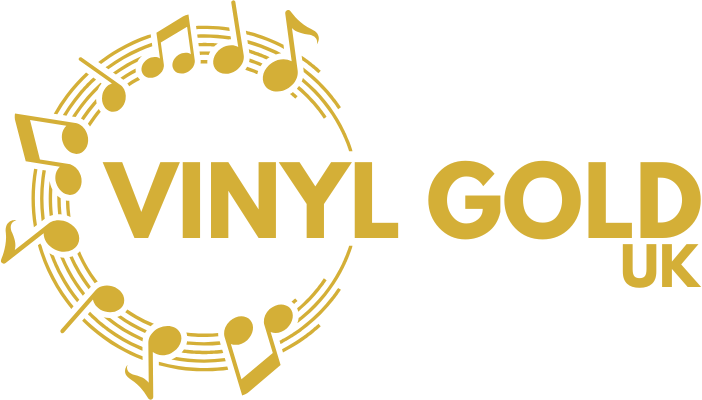Calvin Harris Albums Ranked: The Definitive Review
Calvin Harris Albums Ranked: The Definitive Review
Calvin Harris has consistently redefined electronic dance music, producing chart-topping albums that blend EDM, pop, and funk. From 18 Months to Funk Wav Bounces, his most successful releases showcase collaborations with top artists, creating unforgettable hits that resonate worldwide. Here’s a look at Harris’s standout albums and their impact.
Most Asked Questions
What songs did Calvin Harris actually sing?
Calvin Harris sang lead vocals on his early albums I Created Disco and Ready for the Weekend. As his career progressed, he shifted to focusing on production and began working with a wide range of guest vocalists, stepping back from the mic.
Why is Calvin Harris so popular?
Calvin Harris gained popularity by consistently producing hit singles that blend EDM with mainstream pop. His ability to work across genres, collaborate with high-profile artists, and craft tracks that dominate global charts has kept him relevant for over a decade.
Who has Calvin Harris collaborated with?
Calvin Harris music features collaborations with Rihanna, Dua Lipa, Ellie Goulding, Florence Welch, John Newman, Pharrell Williams, Migos, Katy Perry, Justin Timberlake, and many others. These partnerships have played a major role in his global success.
What genre of music is Calvin Harris?
Calvin Harris music spans several genres, including EDM, dance-pop, house, electro-pop, and, in later albums, funk and disco. He continues to evolve his style while maintaining a consistent production identity.
Where is Calvin Harris from?
Calvin Harris was born in Dumfries, Scotland. He started producing music in his teens and gained recognition through early releases on MySpace before breaking into the mainstream.
How did Calvin Harris become famous?
He became famous after releasing I Created Disco in 2007, followed by his breakthrough with I’m Not Alone in 2009. He gained international recognition through his collaborations, especially with Rihanna on We Found Love.
What is Calvin Harris's net worth?
Calvin Harris’s estimated net worth is over $200 million. His income comes from album sales, DJ residencies, brand endorsements, and production work.
Does Calvin Harris still DJ?
Yes, Calvin Harris continues to DJ at major festivals and Las Vegas residencies. His live performances remain a key part of his global brand.
What is Calvin Harris’s biggest hit?
We Found Love with Rihanna is often considered his biggest hit, reaching number one in multiple countries and defining his mainstream breakthrough.
The Albums
I Created Disco (2007)
Calvin Harris music officially began with the release of I Created Disco in 2007. This debut album introduced listeners to his early electro-indie style, packed with raw synths, lo-fi textures, and quirky lyrics. Unlike his later work, Harris provided vocals across nearly every track, creating a uniquely personal sound. The album reflected 1980s influences while standing apart from the polished EDM landscape that would later define him.
Although the production was less refined than future releases, it built a strong foundation. Singles like "Acceptable in the 80s" and "The Girls" became underground hits and earned him chart recognition in the UK. As a result, the album gained a cult following and gave Calvin Harris his first major breakthrough.
While critics gave mixed reviews, many praised its originality and DIY aesthetic. This record allowed Calvin Harris music to reach a new audience and set the stage for commercial evolution. Transitioning from bedroom producer to a charting artist began right here.
Importantly, I Created Disco proved Harris could write, produce, and perform his own material. Even though it sounds completely different from the hits that would follow, it laid the groundwork for his long-term success. Today, it serves as a reminder of where Calvin Harris music started and how far it would go.
Ready for the Weekend (2009)
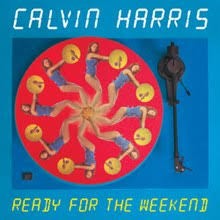
Ready for the Weekend marked Calvin Harris’s transition into mainstream electronic dance music while still maintaining control over vocals and production. Released in 2009, the album showcased a stronger, more confident version of Calvin Harris music, building on the foundation of his debut. The sound was sharper, the hooks were tighter, and the production quality saw a noticeable improvement.
This album featured chart-topping tracks like "I'm Not Alone" and "Flashback," which helped elevate Harris’s profile across Europe. It debuted at number one on the UK Albums Chart, proving his rising status as a key figure in dance-pop. His continued presence on vocals gave the album a cohesive identity, but collaborations began to play a bigger role, signaling a shift toward the future direction of Calvin Harris music.
Critics noted the blend of anthemic energy and emotional undercurrents, especially on tracks like "I'm Not Alone." While some called it formulaic, others praised its balance of dancefloor-ready beats and commercial appeal.
Compared to his debut, Ready for the Weekend felt more polished and accessible. Yet it still retained a sense of individuality that set Harris apart from other electronic artists at the time. Moreover, the album showed his growing ability to write crossover hits that connected with both club audiences and radio listeners.
Ultimately, Ready for the Weekend helped Calvin Harris solidify his reputation in the UK music scene and prepared the ground for international fame. This album is an essential chapter in the growth of Calvin Harris music — both as an artist and a brand that would soon dominate global charts.
18 Months (2012)

18 Months was the defining moment in Calvin Harris’s career. Released in 2012, this album transformed him from UK dance artist to global hitmaker. Calvin Harris music reached new heights through high-profile collaborations and a major shift — he stepped away from lead vocals and let featured artists take center stage. This decision allowed his production skills to shine and created one of the most commercially successful EDM albums of the decade.
With features from Rihanna, Florence Welch, Ellie Goulding, Kelis, and John Newman, the album generated a wave of chart-topping singles. "We Found Love" "Sweet Nothing," and "I Need Your Love" became global anthems. These tracks defined the sound of 2010s electronic pop and showed how Calvin Harris music could dominate both clubs and airwaves.
The album broke records on the UK Singles Chart, with nine Top 10 hits. No other artist had achieved that level of success from a single album at the time. Beyond the numbers, the consistency in sound and energy made 18 Months a go-to project for dance music fans worldwide.
Critically, the album received praise for its structure, pacing, and production clarity. Although some noted the formulaic pop-EDM blend, most agreed that Harris mastered the formula better than anyone else in the genre.
More importantly, 18 Months showed that Calvin Harris music had become a brand associated with massive hits, elite collaborators, and industry influence. It opened doors for more cross-genre work and raised the bar for producer-led albums. Even years later, its singles remain heavily streamed and played at festivals, weddings, and parties.
For many fans and critics, this album remains his peak — a landmark EDM release that changed his career forever.
Motion (2014)
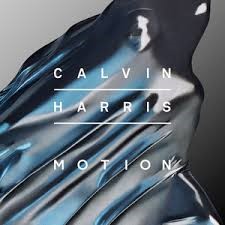
Released in 2014, Motion continued the momentum Calvin Harris built with 18 Months, expanding his reach across pop and EDM markets. The album featured another wave of high-profile collaborations, reinforcing how Calvin Harris music had become a consistent presence in global charts. With vocalists like Ellie Goulding, John Newman, and Hurts, the album delivered dancefloor-ready singles designed for maximum commercial impact.
Tracks like "Summer" and "Blame" topped charts and flooded radio playlists worldwide. Harris even returned to the mic on "Summer," showing that he could still deliver a hit as both producer and performer. The sound leaned heavily into anthemic, synth-driven production — a style he had by now perfected.
Critics gave the album mixed-to-positive reviews. While some saw it as a safe continuation of the 18 Months formula, others praised its consistency and festival-ready appeal. The album’s highlights carried enough energy and polish to satisfy EDM fans and mainstream audiences alike.
Importantly, Motion reinforced Calvin Harris music as a reliable hit machine. The album’s commercial success proved that Harris wasn’t a one-album wonder — he had staying power in an industry where producers often fade quickly. Furthermore, his strategic use of rising and established vocal talent kept each track feeling fresh.
By 2014, Calvin Harris had become a household name. His music dominated streaming charts, club rotations, and pop culture playlists. Motion didn't reinvent his sound, but it didn’t need to. Instead, it refined his strengths and delivered another set of global dance anthems.
This album confirmed Harris’s place at the top of the EDM-pop world and ensured that Calvin Harris music would continue shaping modern dance music.
Funk Wav Bounces Vol. 1 (2017)
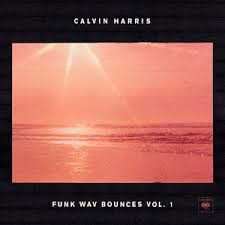
In 2017, Calvin Harris surprised fans with a complete stylistic shift. Funk Wav Bounces Vol. 1 abandoned the EDM-pop formula in favor of sun-soaked funk, disco, and R&B. This album introduced a more relaxed and groove-driven side of Calvin Harris music, built on smooth rhythms, analog instrumentation, and hip-hop influences. The transition marked a bold move, proving his range as a producer.
Rather than chasing chart trends, Harris curated a diverse list of collaborators. Artists like Frank Ocean, Migos, Pharrell Williams, Katy Perry, and Big Sean helped bring a fresh, genre-blending sound to the project. Tracks such as "Slide" and "Feels" received heavy radio play and earned critical praise for their laid-back summer vibe.
Despite the shift, the album maintained strong commercial performance. It debuted in the Top 10 in several countries and reached a wide audience, even those unfamiliar with traditional EDM. Calvin Harris music evolved here, moving beyond festival anthems to something more nuanced.
Critics appreciated the new direction, noting its focus on groove, tone, and musicality. While some EDM purists felt alienated, many welcomed the creative risk. The album avoided overproduction and relied on rich instrumentation and tasteful restraint.
Most importantly, Funk Wav Bounces Vol. 1 proved Calvin Harris didn’t need formulaic build-ups and drops to succeed. His identity as a producer could stretch across genres without losing his signature polish.
This album reshaped how audiences perceived Calvin Harris music. It expanded his influence into hip-hop and R&B and redefined his role in the industry. Instead of repeating past success, Harris delivered something unexpected — and it paid off.
Funk Wav Bounces Vol. 2 (2022)
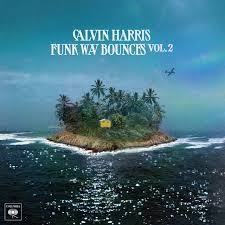
Funk Wav Bounces Vol. 2, released in 2022, continues the stylistic journey Calvin Harris began in the first volume. Rather than return to EDM, Harris leans further into retro grooves, blending funk, soul, R&B, and hip-hop influences. This album showcases a matured, relaxed version of Calvin Harris music, prioritizing laid-back rhythms and atmospheric production over dancefloor intensity.
The guest list remains impressive, with contributions from Dua Lipa, Justin Timberlake, Halsey, Pharrell Williams, 21 Savage, and more. These collaborations bring depth and variety while keeping the vibe cohesive. Tracks like "Potion" and "Stay With Me" reflect Harris’s growing comfort with this style, offering smooth transitions and live instrumentation that give the album a summery, escapist feel.
Though the album received mixed critical feedback, many praised its consistency and refusal to chase mainstream EDM trends. Instead of recreating radio anthems, Calvin Harris music here explores groove and mood, presenting an experience rather than a series of hits.
The commercial performance was solid, though not as dominant as earlier releases. Still, the album proved Harris can evolve without losing his audience. It also confirmed that Funk Wav Bounces is not a one-off experiment but a lasting chapter in his catalog.
Listeners who expect high-energy bangers may not connect immediately. However, those open to a smoother, more curated sonic palette will find value in this project. Harris uses subtlety rather than spectacle, focusing on flow and feel.
Ultimately, Funk Wav Bounces Vol. 2 reinforces the range of Calvin Harris music. It shows that even after years at the top, he remains willing to adapt, collaborate, and explore new musical spaces while still sounding unmistakably like himself.
From the raw, DIY energy of I Created Disco to the smooth, genre-blending sound of Funk Wav Bounces Vol. 2, Calvin Harris music has evolved continuously while staying true to its dance roots. Across six studio albums, he has showcased an unmatched ability to adapt, innovate, and lead the way in modern pop and electronic production. Whether dominating charts with festival anthems or crafting chilled-out funk grooves, Harris remains one of the most influential and versatile producers of his generation. As fans await future projects like 96 Months and Blessings – The Remixes, his catalog stands as a testament to both his creativity and longevity. Calvin Harris music doesn’t just follow trends—it defines them.
Recent Posts
Queen studio albums: A Review
Phil Collins Albums Ranked & Reviewed – Complete Guide to Every Studio Album
The best of Massive Attack
Let’s Make Magic
Book Your Event DJ Now
